Devotion – Part 4: Italy
Chapter 12: Mantua Gonzaga Dynasty, Precious Blood and more…
by Patrick Soricone, Guest Contributor

Patrick lives in Bologna, Italy
House of Gonzaga
The House of Gonzaga is an important Italian Renaissance (Rinascimento) princely family that ruled Mantua (Mantova) in northern Italy, from 1328 to 1707. Mantua is located where the regions of Lombardy, Veneto and Emilia-Romagna come together. The family also ruled Monferrato in Piedmont and Nevers in France, as well as many other lesser fiefs throughout Europe. But it is in Mantua where they made their lasting mark on what would become the nation of Italy.
In 1328, the man who would become Ludovico I overthrew the ruler of the city (his own brother-in-law) and the Gonzaga dynasty began. Turning the city into a key source of political prestige and cultural splendor over nearly four centuries. In recognition of its historical significance and architectural achievements from the Gonzaga era, Mantua was awarded UNESCO World Heritage Site Status in 2008.
Politics, Culture and Religion were deeply intertwined. This helped maintain status, power and influence. The Gonzaga wealth allowed them to recruit the best artistic talent available. Their political skills kept threats from rival fiefdoms away. And their religious efforts resulted in good relationships with Popes, and a family that includes a saint, twelve cardinals, and fourteen bishops. It is difficult to discern from our current vantage point to which ‘devotion’ the Gonzaga were most committed: God, Power, or Culture. And to know how that priority evolved over time, or how it may have changed based on who was leading the dynasty. What is evident is that these three elements were thoroughly intertwined. The Gonzaga clan’s ability to navigate them were key to their dynasty’s longevity. After all, one can see evidence of this in any of their buildings. You cannot wander far without the presence of religious icons, examples of military might, or frescoes with passionate expressions of life, regardless of the intended purpose of the room.
Palazzo Ducale
Among the most important sites in Mantua is the Palazzo Ducale or Ducal Palace in the north-eastern section of the city. It was from here that the Gonzaga clan ruled the city state. The palace holds 500 rooms, numerous buildings connected by corridors and galleries, courtyards and gardens, and resembles a sort of city-palace that extends over approximately 35,000 square meters.
Art lovers will be wowed by the Palace’s interior, the Hall of Pisanello, the splendid Troia apartment (which takes its name from the fresco cycle in the main room - realized by Giulio Romano and his apprentices), and the celebrated Arazzi, a collection of sketches designed by Raffaello and intended for tapestries.
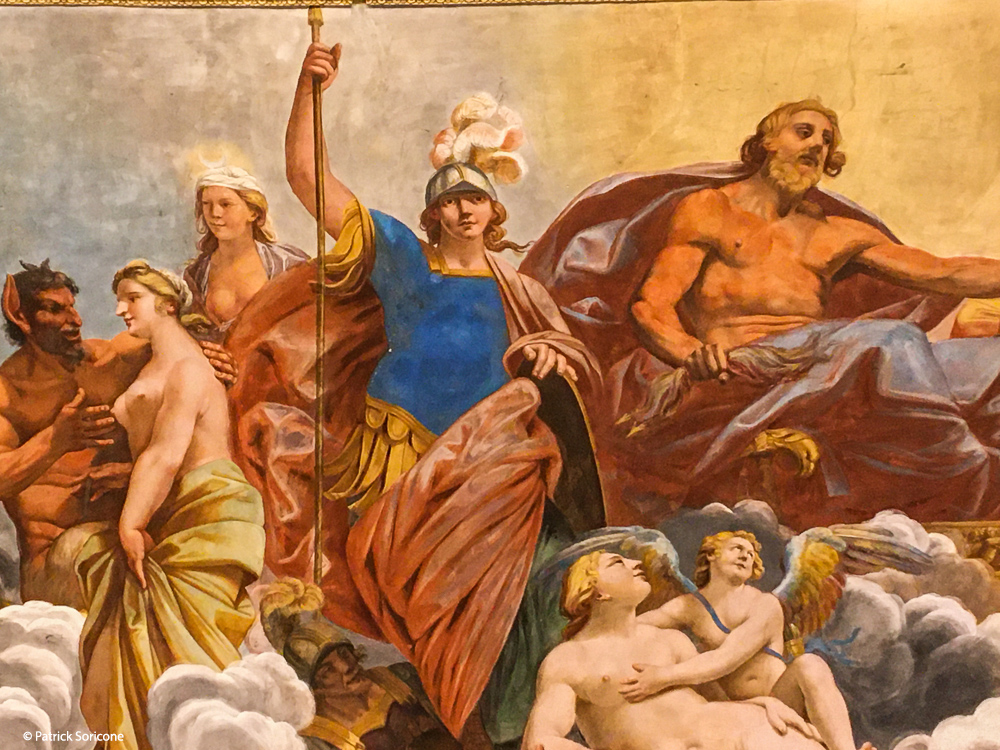
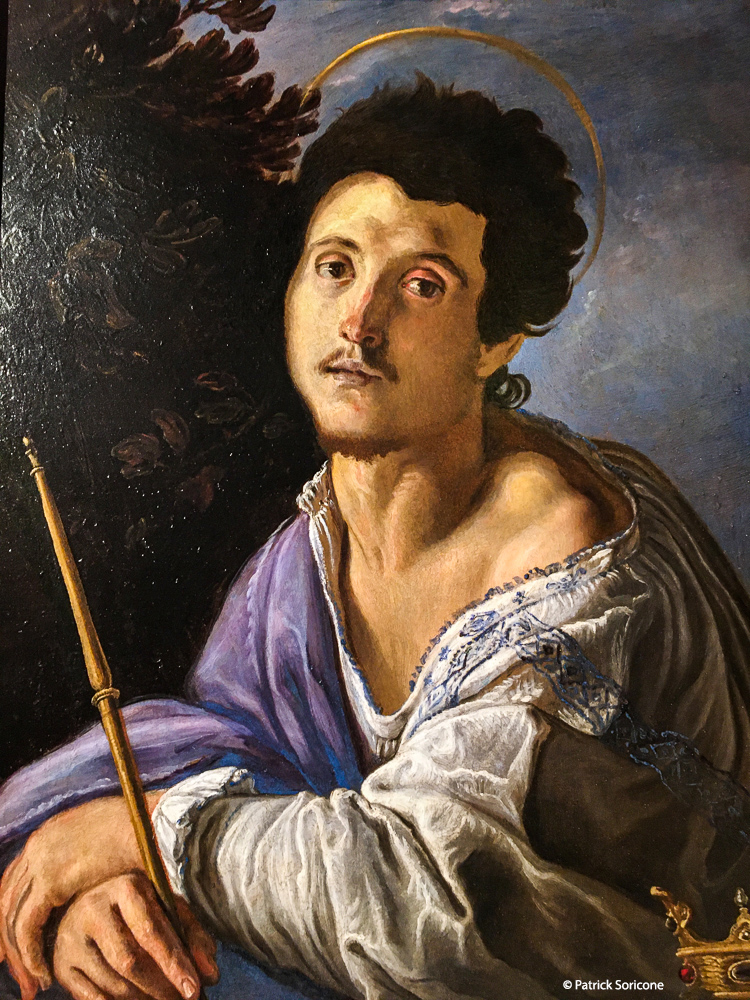
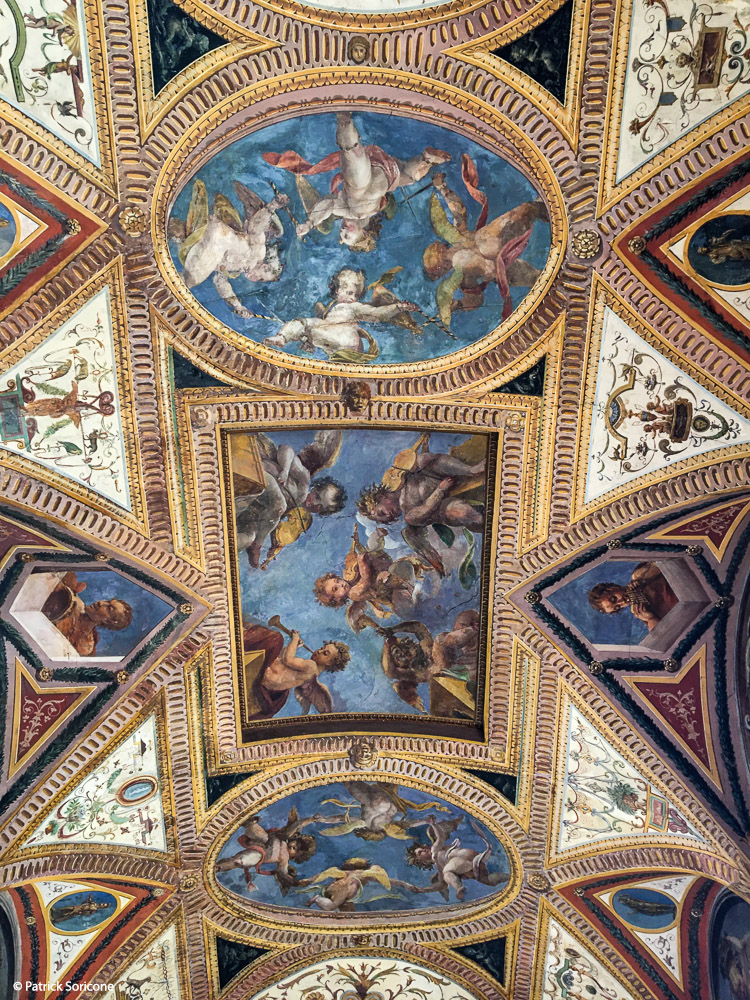
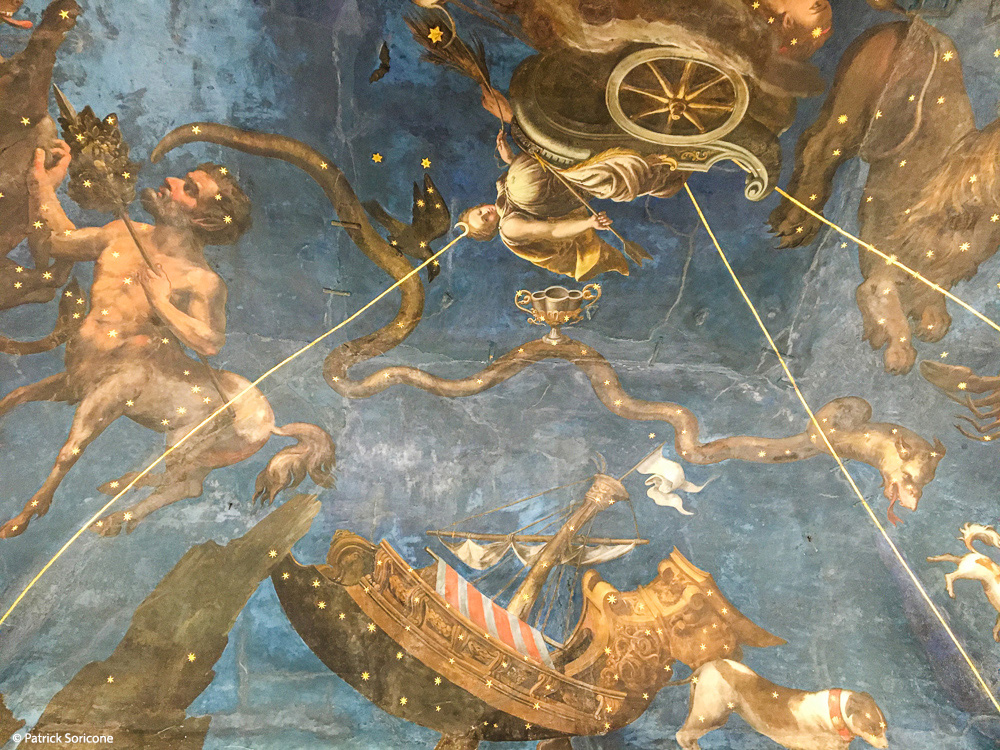
Also part of the complex of the Ducal Palace is the Castello di San Giorgio, which most famously houses frescoes by Mantegna in the Camera degli Sposi or “Newlyweds Room,” which was dedicated to Ludovico II Gonzaga and his wife. Viewing this religiously sexy room (which to this writer’s mind is overrated) requires advance reservation as the frescoes fragility means a very limited number of carbon dioxide-producing humans are allowed in at any one time.
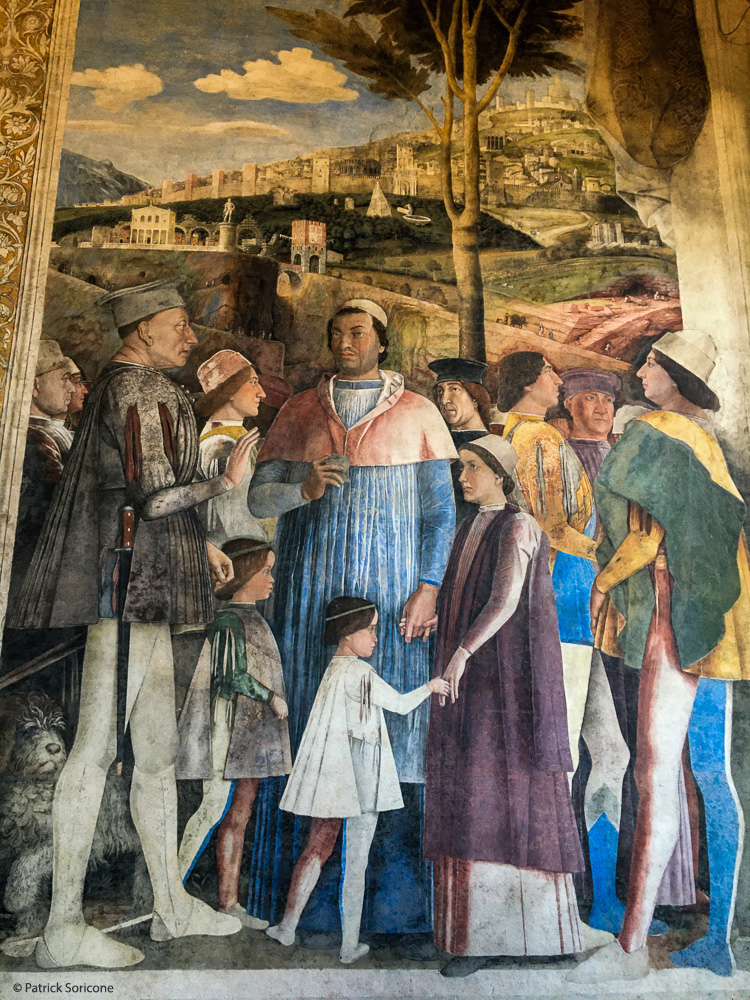
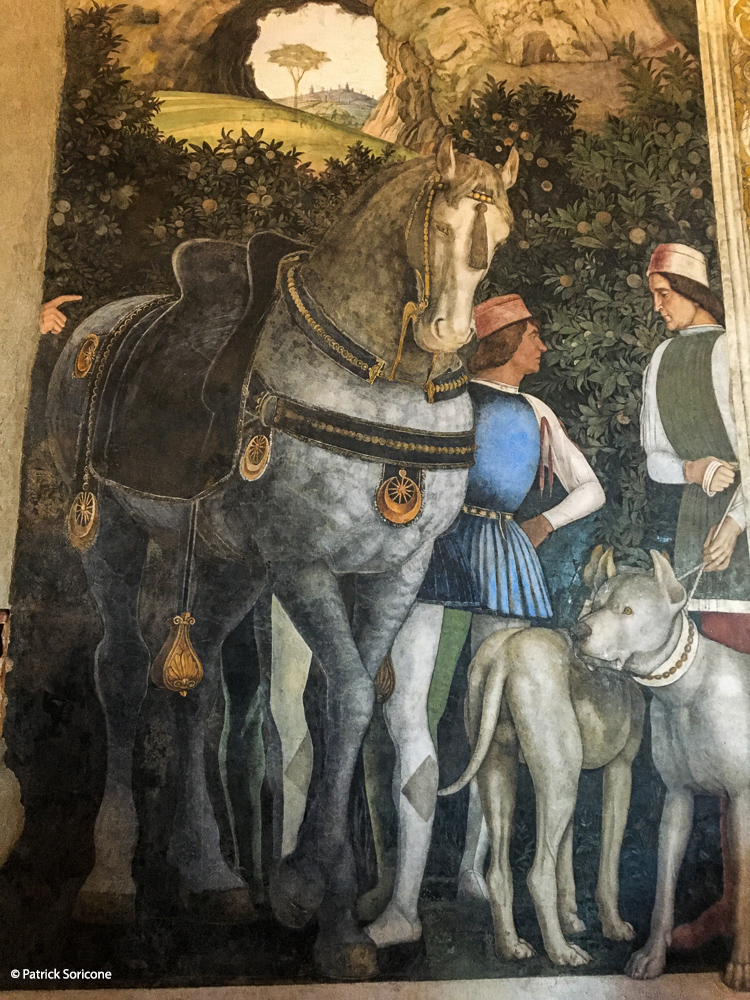
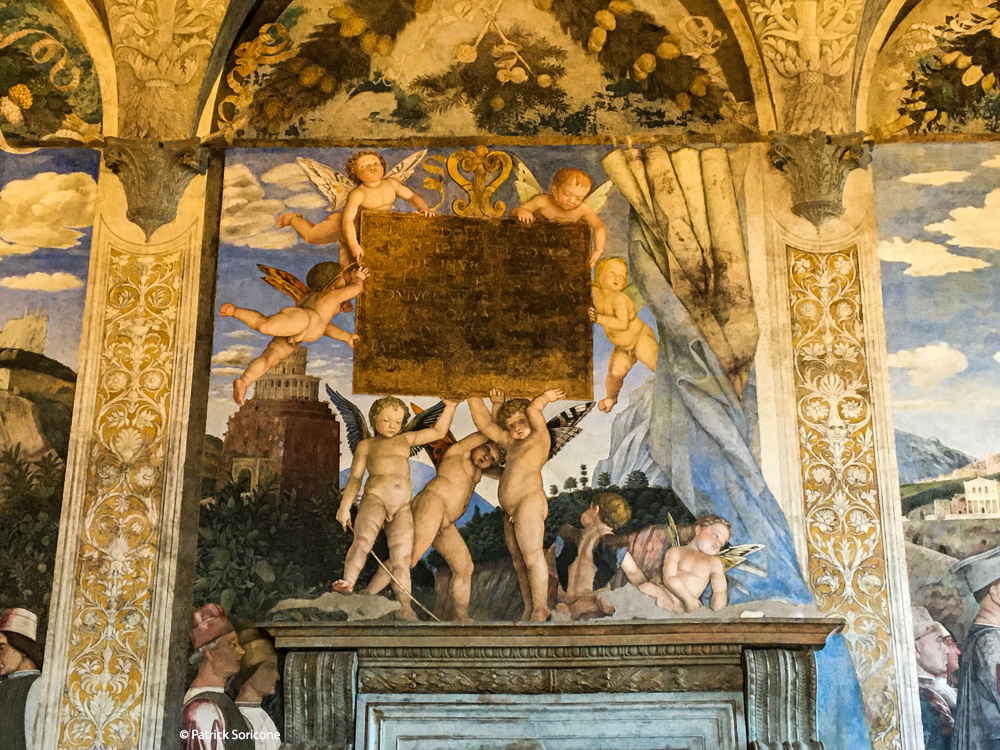
Castello di San Giorgio (Saint George’s Castle) was built under the direction of Francesco Gonzaga (4th of Gonzaga rulers) between 1395 and 1406 by Bartolino da Novara. The square-plan building with four angular towers surrounded by a moat, three gates and their drawbridges makes it a movie-set perfect castle. Originally meant for the defense of the city, it later became the residence of the family.
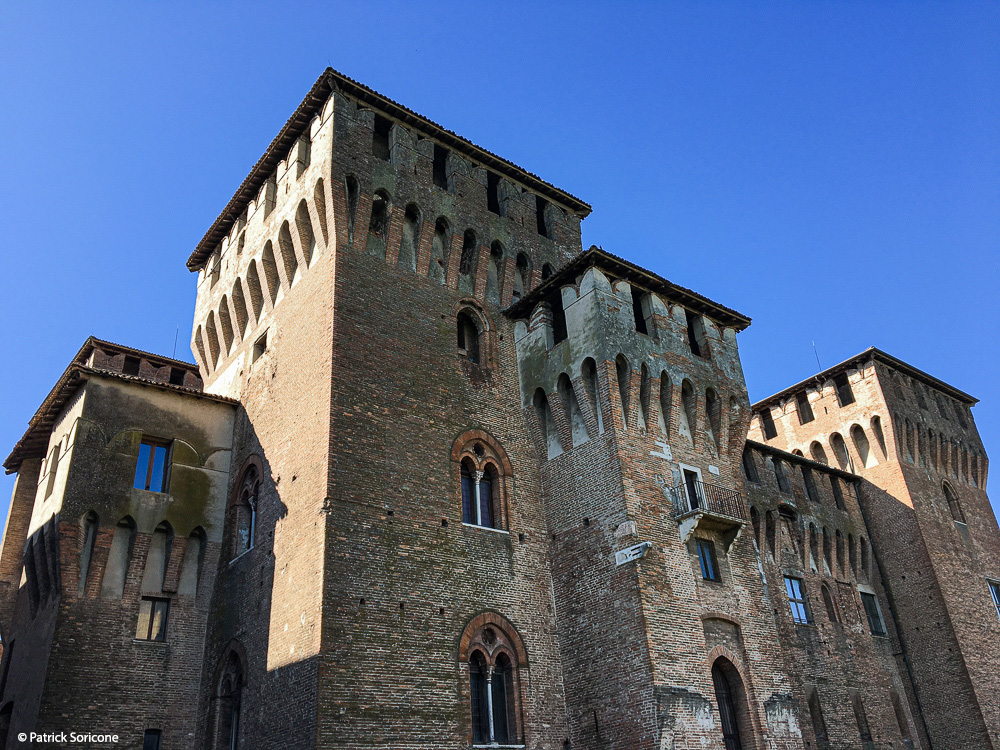
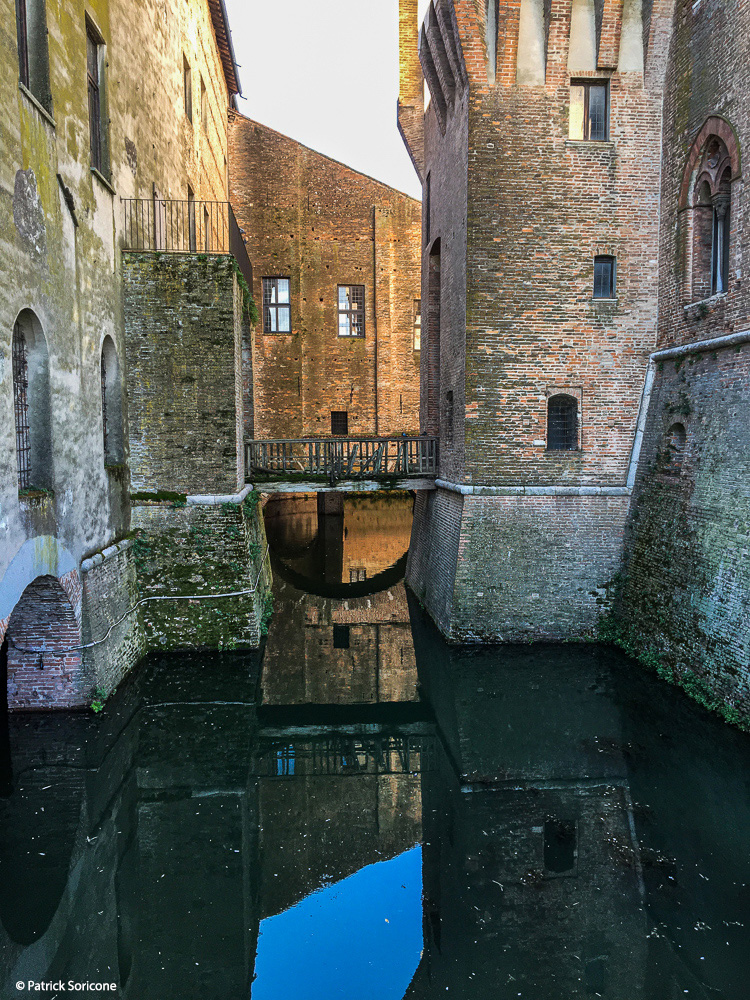
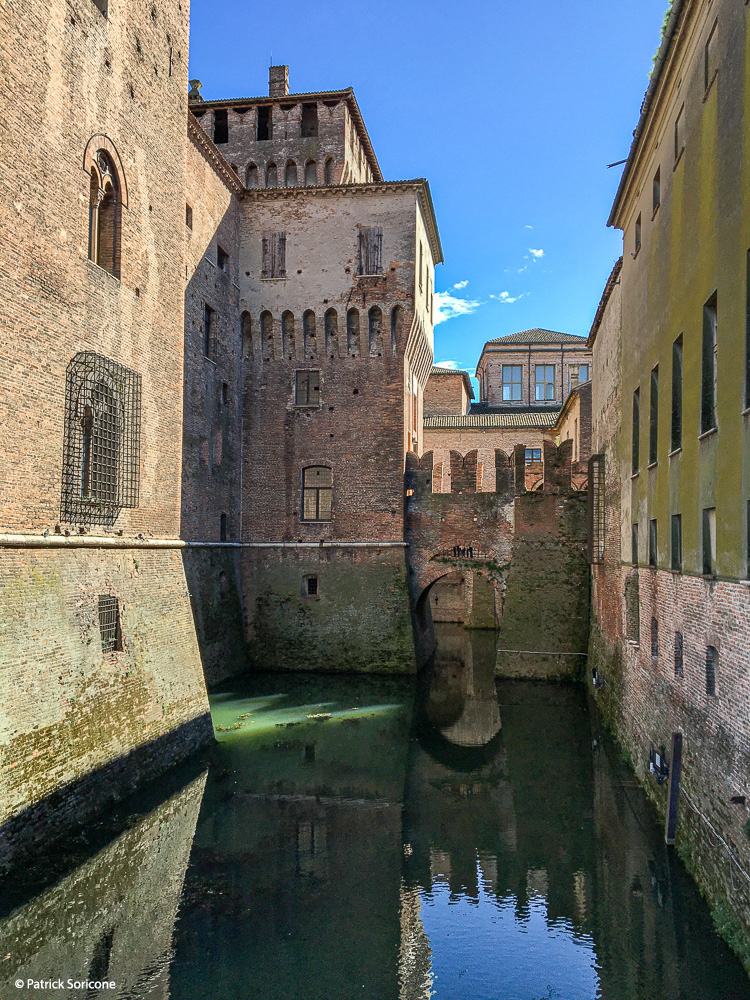
Palazzo Te
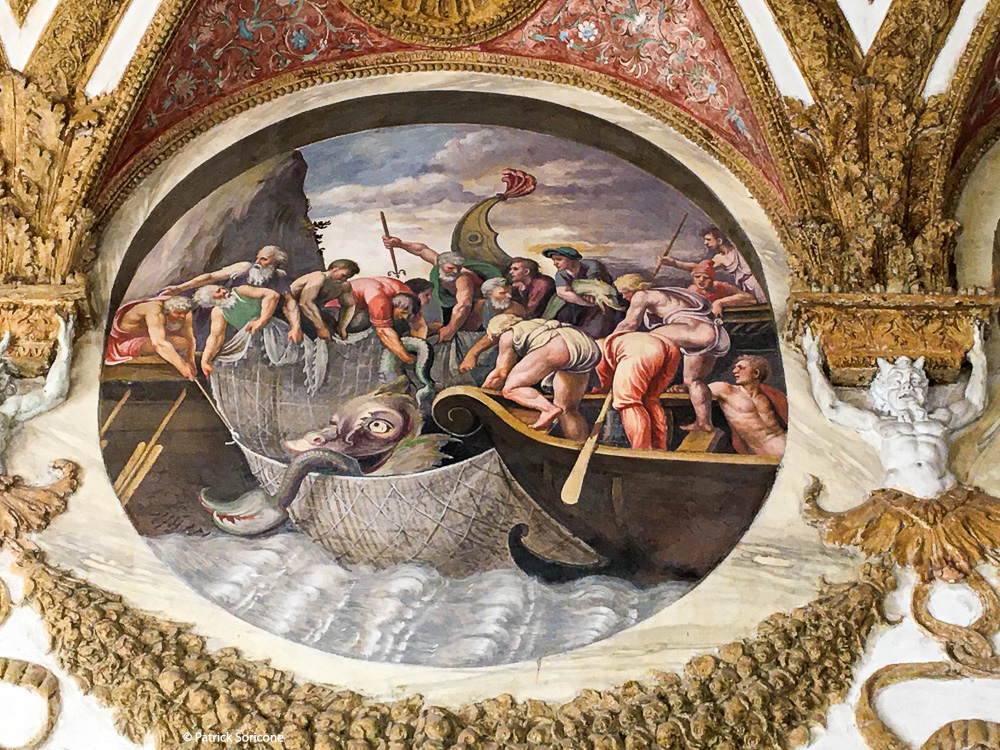
Among the most beautiful villas in all of Italy and a masterpiece of the Mannerism style of architecture, Palazzo del Te was built by Giulio Romano between 1525 and 1535, as a suburban summertime residence for Federico II. (“Te” is a place-name for the now dried up nearby pond, and has no relation with the word “tea”).
Palazzo Te, is located in the far eastern part of town, just outside the ancient city walls, and even now is surrounded by green fields and parklands. Its location serves as an anchor for the historic grand boulevard through old town.
The villa was conceived as a place for Frederico II and his high-society set to live out that famous phrase il dolce far niente, or “the sweetness of doing nothing.” Another expression of Gonzaga devotion, Palazzo Te was devoted to leisure. Federico II chose this place where the family used to keep their horses. Romano, enclosed the old stables, and in the process of his amazing ten year effort, created an extraordinary palace. The square design recalls that of a traditional Roman villa, with a central courtyard and a low profile rustic architecture naturally blending in the green landscape of the surroundings. The palace has unusual proportions: it looks like a large, low, single-story block whose height is about a quarter of the width. The back of the palace opens onto a beautiful garden with two side pools called peschiere.
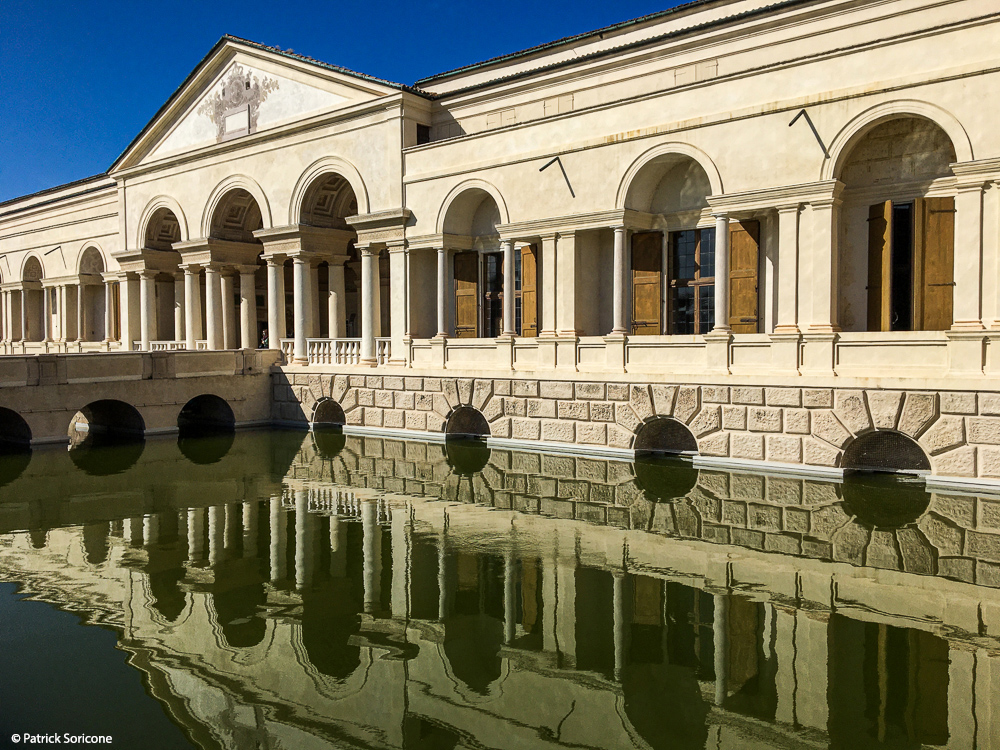
When visiting this incredible villa, be sure to pay close attention to Romano’s masterpieces: the Sala dei Giganti (Room of the Giants), a floor to ceiling depiction of a battle between earthly giants being beaten back from invading the gods on Olympus);
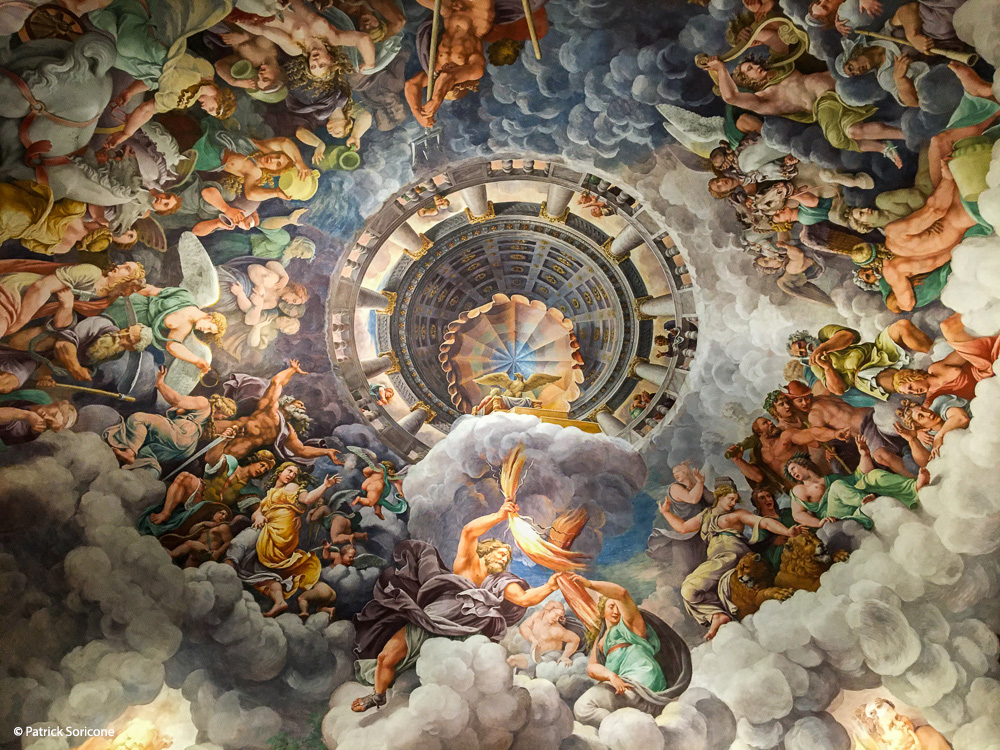
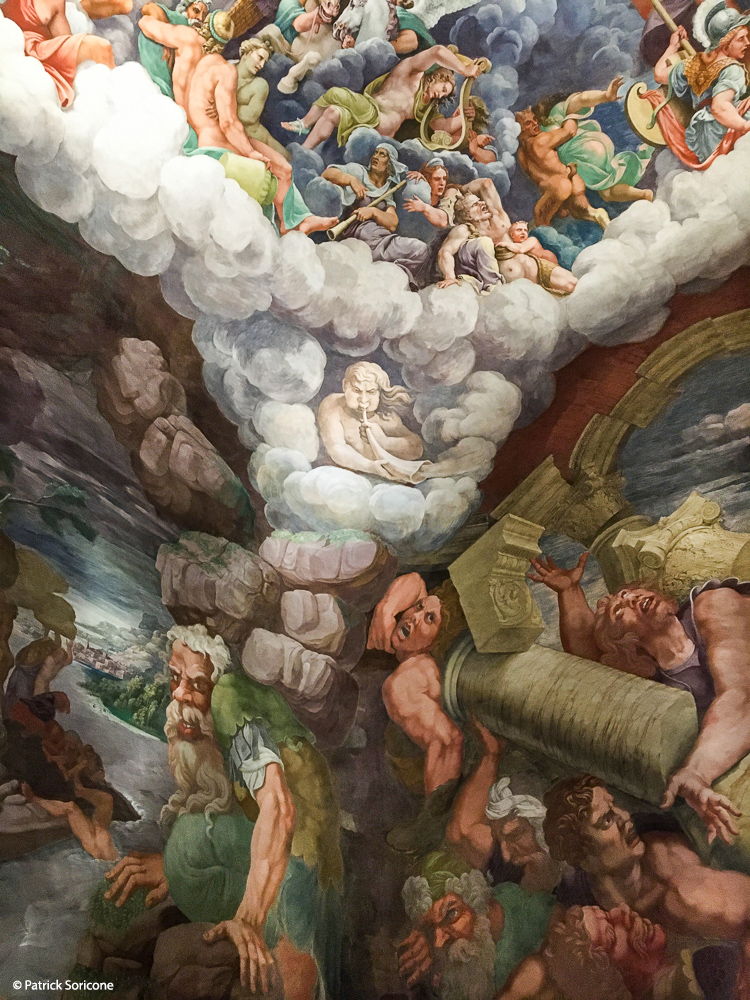
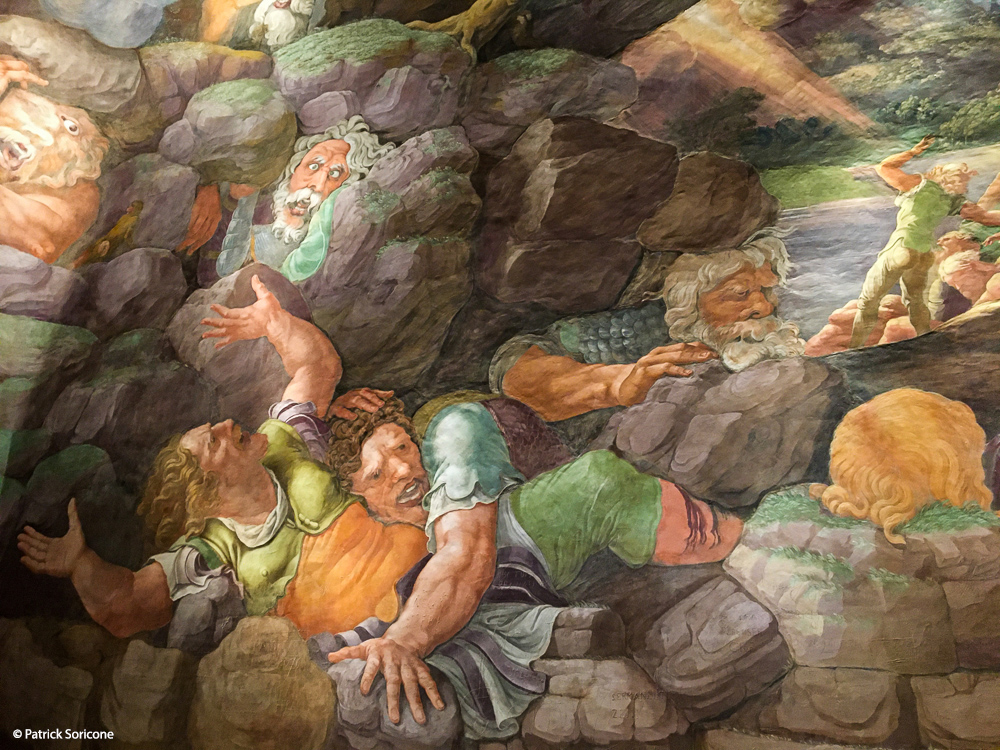
the Sala de Amore e Psiche (Room of Cupid and Psyche) full of erotic frescoes;
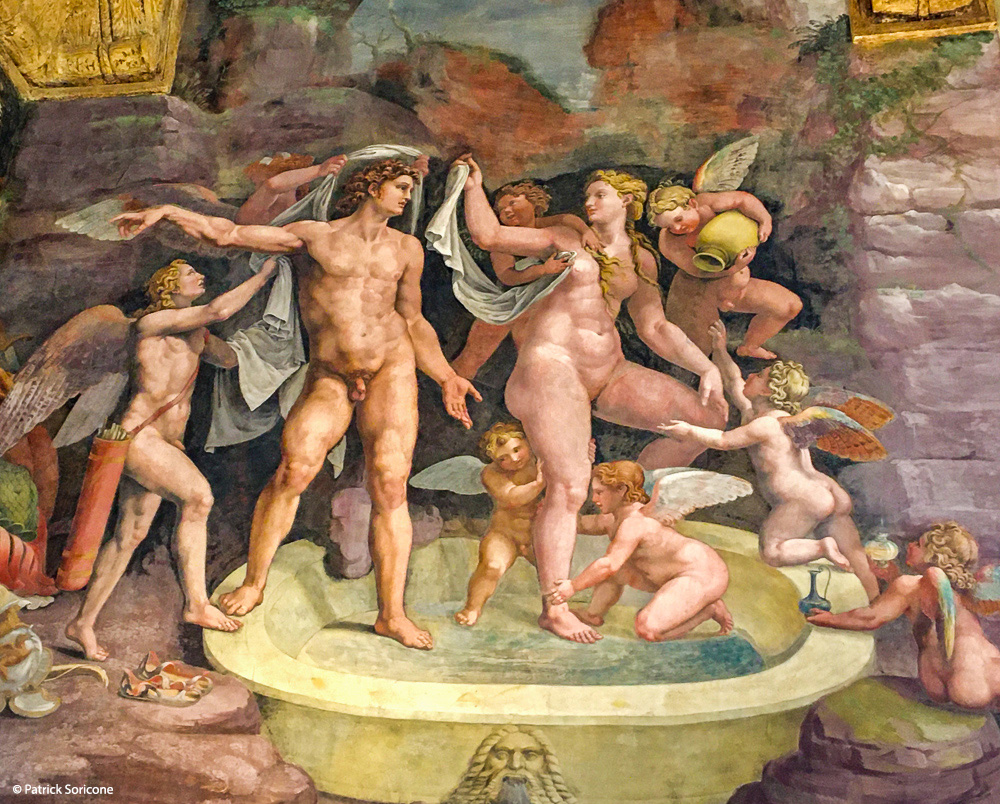
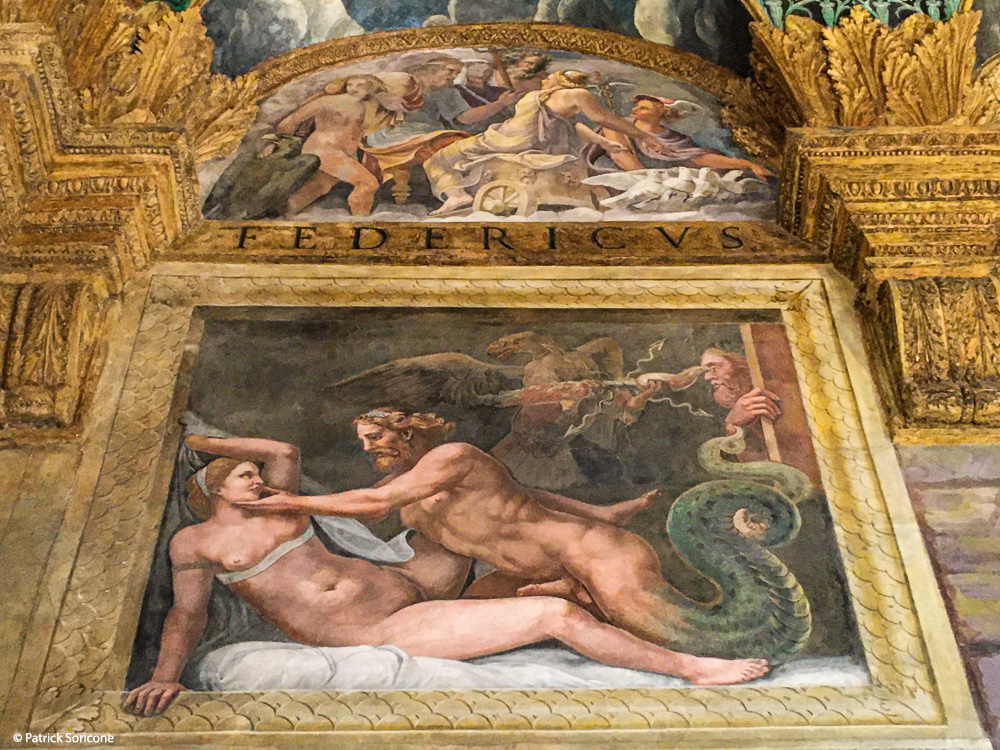
and the Sala dei Cavalli (Horses Salon) complete with life-sized portraits of their favorite horses.
Basilica of Sant’Andrea & the Precious Blood
There is no better example of devotion found in Mantua than in this imposing basilica. The symbol of the city, with its wide dome, it can be seen from a long distance. One of the most important churches in the Christian world, it holds dirt purported to be the relic of the Precious Blood of Christ. The devotional tradition for this dirt was corroborated by historical testimonials and ‘miraculous facts’.
The relic’s history started at the foot of the Cross where the Roman soldier Longinus (later awarded sainthood) picked up a bit of soil soaked in the blood of Jesus, became a Christian, and after roaming around for years finally came to Mantua in 37 A.D. with his Precious Treasure.
The relic was hidden before Longinus was killed and was ‘miraculously’ found in 804 A.D. when St. Andrew revealed to a beggar in a dream the very spot where the relic was buried.
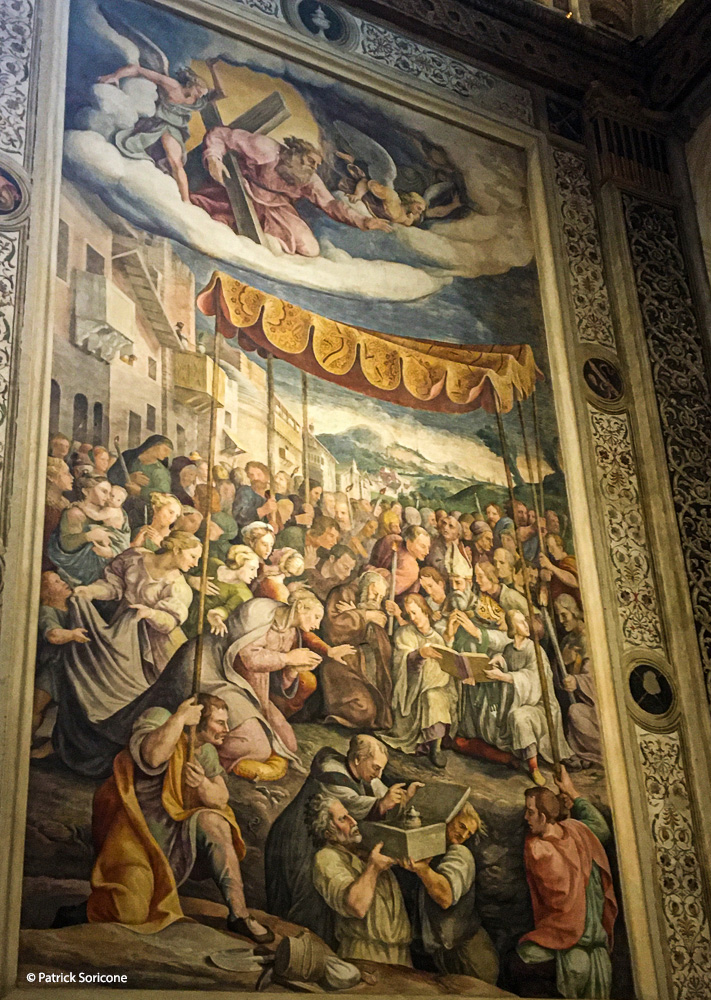
The soil soaked with the Precious Blood had been kept hidden underground, for fear of desecration. Buried again, it was subsequently retrieved in 1048 A.D. From then on Popes, Princes and Emperors came to worship the Precious Blood.
In 1472, Ludovico III commissioned a new imposing Basilica and the task was given to the famous architect Leon Battista Alberti who unfortunately died soon after the project was designed. Construction started under the supervision of Luca Fancelli. St. Andrew’s Church is a superb example of Renaissance architecture, but it took almost three hundred years to complete it. Yet, another expression of devotion!
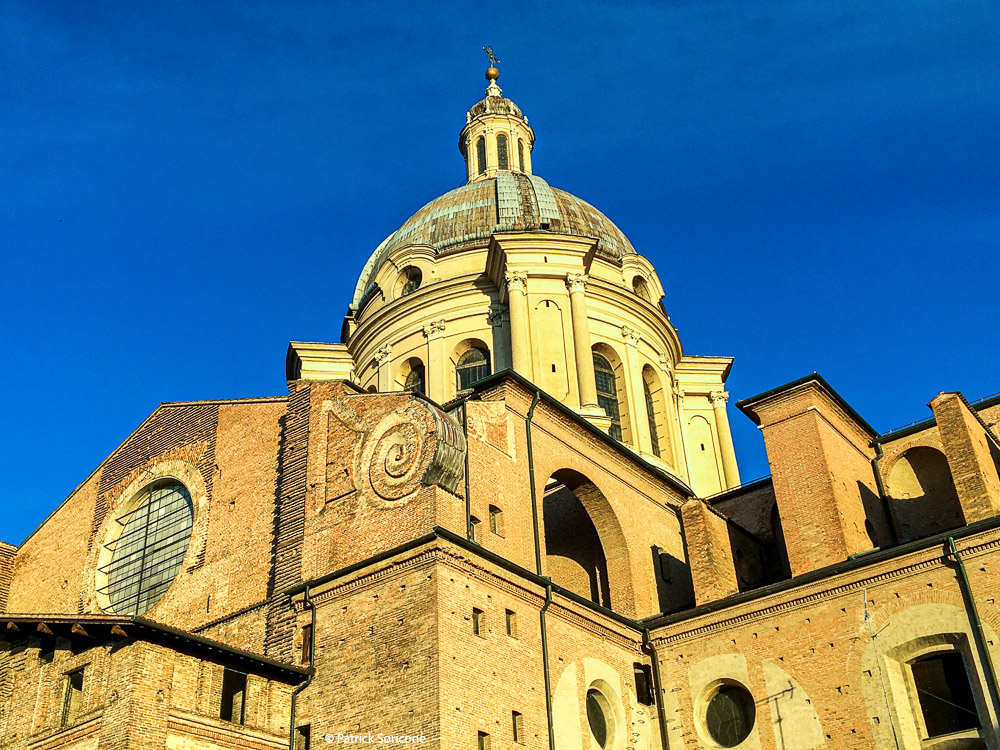
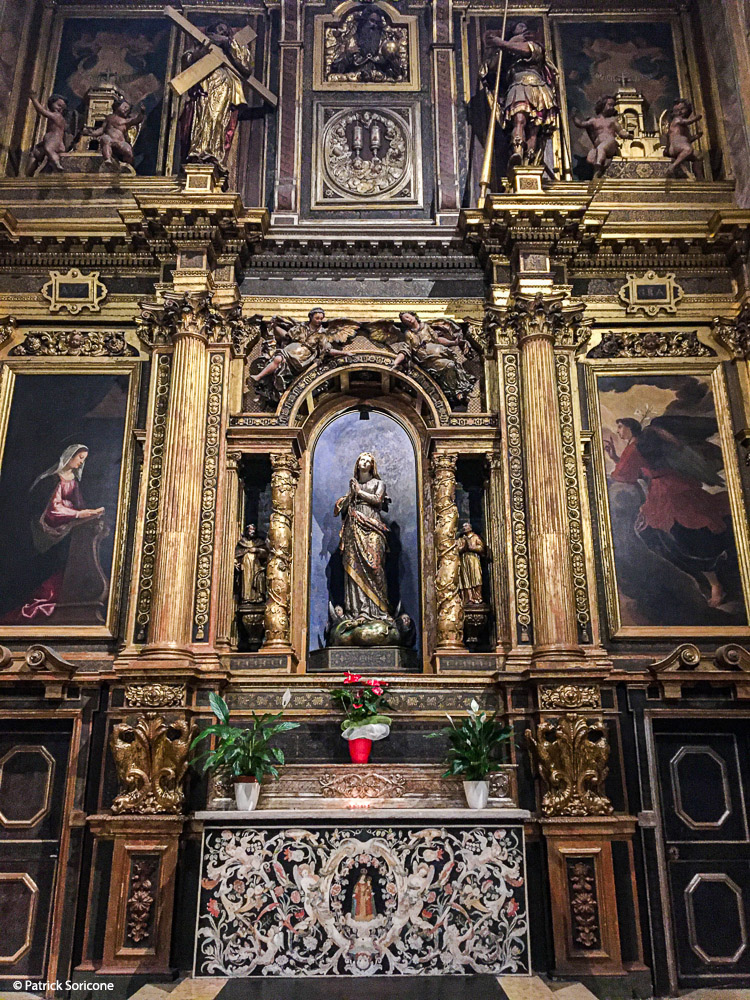
St. Andrew’s is one of the largest churches in Europe, over a hundred meters long. Today, the relic is kept in the Crypt under the dome and can be seen just once a year, on Good Friday afternoon, when it is taken along the streets in Holy procession. During the rest of the year, visitors can enter the locked crypt only with a guide, hear a 25 minute presentation about the relic, and stare from a distance behind iron gates, at the multi-layered case protecting the Precious Blood.
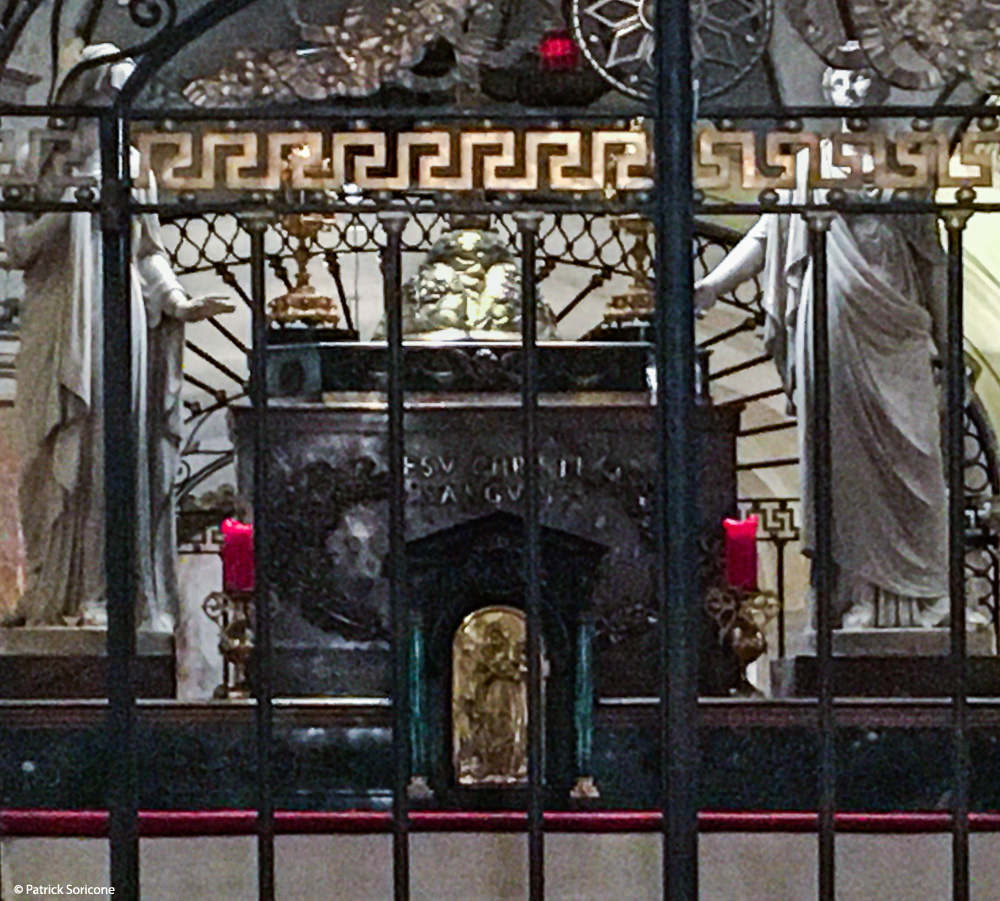
Upon returning up to ground level, a donation is expected…
A slide show of higher resolution images in this chapter is in Galleries and you can access this gallery directly by clicking HERE.
Next Monday we start our visit of Venice.
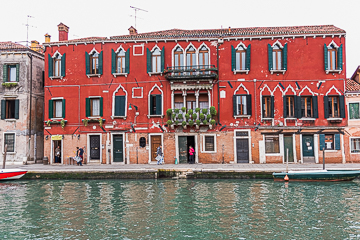
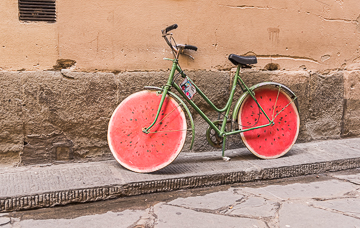
December 13, 2020
Chapter 13: Venice The City – one of two
The name of the city of Venice comes from the ancient Venti people that inhabited the region by the 10th century BCE.